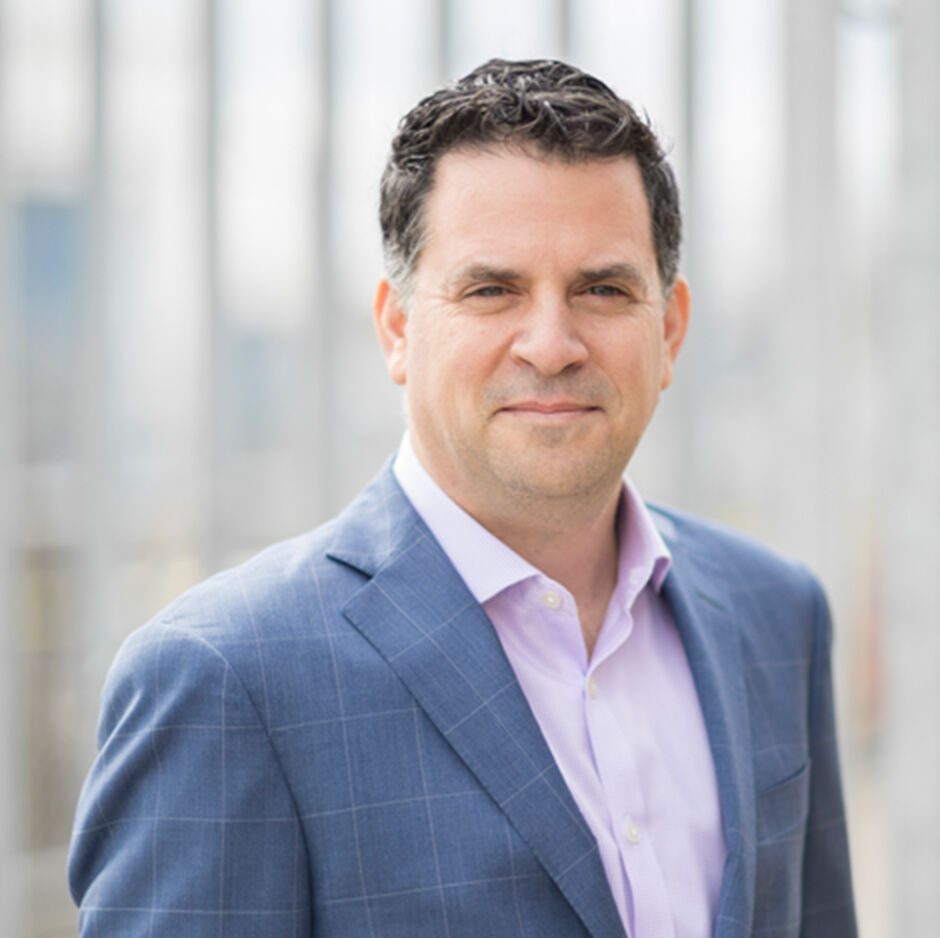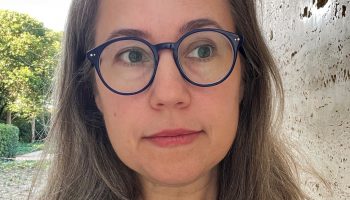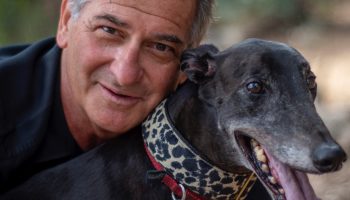Pain is a normal reaction to illness and injury. Whether acute or chronic, it lets people know that something is wrong. Severe pain, however, can hijack one’s life.
Chronic pain — as from arthritis, atypical head and facial aches, cancer or fibromyalgia — is pain that lasts more than six months. When pain signals stay active, the pain can remain long after the trigger is gone, sometimes for years. It can zap one’s appetite and energy, limit movement, tense up muscles, and cause anger, anxiety, fear and depression.
The cannabis plant, especially its dried leaves and flowering tops, is a source of medical treatments that provides pain relief for many.
At 2 p.m. Saturday, Aug. 6 at the Hall of Philosophy, investor and former pharmacist Jason Wild will deliver a talk for the Chautauqua Women’s Club’s weekly Contemporary Issues Forum, titled “Cannabis: Illegal to Essential — The Evolution of the Plant’s Perception and the Opportunities Ahead.”

Wild is the president and chief investment officer of JW Asset Management, and chairman of TerrAscend in Canada, a cannabis operator that has vertically integrated U.S. facilities. He is also the former chairman of Arbor Pharmaceuticals, which he acquired in 2010, and sold half of to global investment company KKR in 2014 and the rest to Azurity Pharmaceuticals in 2021.
“People thought of cannabis as a gateway drug,” Wild said. “Now, it’s described as an exit drug for people prescribed pain pills and for people drinking more alcohol than they should. This is a harm reduction tool. The truth is, no one ever died from cannabis. A lot have from drunk driving. (Cannabis) makes people less aggressive. That’s going to be coming out, I think, in more data covering opioid abuse.”
Efficient, effective and safe treatment is imperative for those suffering from chronic severe pain.
The federal law that established U.S. federal drug policy is The Controlled Substances Act of 1970, signed by President Richard Nixon. Under CSA’s Schedule 1 delineations, cannabis with more than 0.3% tetrahydrocannabinol (THC) – aka marijuana – has “no accepted medical use” and a high likelihood for abuse and dependence, both physical and psychological.
In 37 American states, however, cannabis can be used for medical purposes with a physician’s approval.
About a year ago, according to Wild, the Illinois state medical program decided that in order to get cannabis for medicinal purposes, a patient needs either a physician’s prescription for cannabis, or a prescription for any opioid.
The scientific evidence about cannabis has been evolving as federal and state drug policies have diverged in the market.
In January 2017, the National Academies of Sciences, Engineering, and Medicine issued a report titled, The Health Effects of Cannabis and Cannabinoids: The Current State of Evidence and Recommendations for Research.
A National Academies of Science committee conducted an in-depth and broad review of more than 10,000 scientific research abstracts published since 1999 regarding “what is known about the health impacts of cannabis and cannabis-derived products … ranging from their therapeutic effects to their risks for causing certain cancers, diseases, mental health disorders and injuries.”
In a press release accompanying the report, the NAS said that, for the treatment of chronic pain in adults, evidence showed that “patients who were treated with cannabis or cannabinoids were more likely to experience a significant reduction in pain symptoms.”
Still, “evidence suggests that cannabis use prior to driving increases the risk of being involved in a motor vehicle accident,” the NAS noted, but the committee needed more evidence-based research to determine if and how the use of cannabis is associated with occupational injury or with death.
As more state laws and policies change, so must the research about the use and effects of cannabis. In 2017, the NAS committee found substantial challenges and barriers to conducting such research, like cannabis’ classification as a Schedule 1 substance.
“Researchers also often find it difficult to gain access to the quantity, quality, and type of cannabis product necessary to address specific research questions,” according to the 2017 press release. “The committee said a diverse network of funders is needed to support cannabis and cannabinoid research.”
As a former pharmacist, Wild is more knowledgeable about medicinal uses of drugs, cannabis included, than are most investors.
“My father’s a pharmacist,” Wild said. “Growing up he had, I think, five or six stores. All were in upper Manhattan and the Bronx. I grew up on the pharmacy floor using the pricing gun and cash register.”
At the University of Wisconsin, Wild took pre-med courses and realized over time that he didn’t really want to be a physician, so “my father said, ‘Why not be a pharmacist? You can help me with my stores.’ ”
After three-and-a-half years in Wisconsin, he said he transferred to Long Island University in Brooklyn, New York, and spent two-and-a-half years in pharmacy school.
Wild’s roommate told him about Peter Lynch, who managed the Fidelity Magellan Fund. Lynch’s investment approach was to buy “what you know.” He read Lynch’s books, including One Up On Wall Street and Beating the Street.
“I got into it in about 1997,” Wild said. “ ‘Buy what you know’ made sense, and it didn’t overcomplicate Wall Street. People at business school get technical. … I learned a lot about the market on my own. I read whatever I could find.”
Wild continued: “Good people offered advice. And there was information for the taking on the internet. I had $10,000 in my bank account in 1997, and started investing in pharmaceutical companies.”
By the time he graduated from pharmacy school, Wild said his father had sold all of his stores because they couldn’t compete with Walgreens. He said he worked for a pharmaceutical company, put paychecks in his Charles Schwab account, and invested in pharmaceutical companies.
“As a pharmacist that first year, I made $65,000,” Wild said. “By investing, I made $400,000. I was bored out of my mind filling prescriptions.”
An ad in the newspaper in 1998 led to a phone call that prompted him to open a hedge fund for $20,000.
“My view was, ‘If you build it, they will come,’ ” Wild said. “I didn’t really care about what I started with. I started with $80,000 – $50,000 from me, $20,000 from my dad, and $10,000 from a friend.” His hedge fund was soon making millions.
“My real wheelhouse is specialty pharmacies. I liked the smaller ones. … I realized I wanted the fund to own a pharmaceutical company as an asset. I always looked at the fund as a family asset. Half of it is my own money. Most look at (a fund) as a business. I’ve never had major investments outside my fund.”
Wild founded Arbor Pharmaceuticals in 2010, and said he liked the CEO.
“I convinced him to let me buy it and build it into a real drug company. I made three amazing deals for not that much money or structure. Mostly because of those three deals, in 2011 I did $55 million in pre-tax earnings on $127 million of sales, which … made the value of the company go up. We developed a couple of our own drugs.”
He continued: “Right around then I got a call from a Canadian banker because the Canadian Supreme Court had just legalized cannabis, and there’s a right to have cannabis in Canada.”
He was invited to Toronto to see a cultivation facility.
“I was excited,” Wild said. “There are a lot of opportunities, not just in Canada, but the world. They walked me through all the medical uses. The biggest uses are for pain and anxiety. There was testimony about how cannabis was helping people. It’s an alternative to opioids for pain.”
Wild said he later met with 20 private cannabis companies and invested in five. They became some of the most successful, and all went public.
“Towards the end of 2017, I was in Canada for a conference,” he said. “It hit me that I wanted to do an Arbor in Canada and start it from scratch. Then we really could compete. I didn’t have the goal of being one of the top pharmaceutical companies in the world, but I could be for cannabis.”
Convincing TerrAscend to take a $55 million private placement, he became chairman of this Canadian company.
“I’ve been executing on building TerrAscend into one of the largest players in the U.S.,” Wild said. “In 2018, I realized that Canada was a fraction of the size of the U.S. — (just) 10%. Then (former speaker of the U.S. House of Representatives) John Boehner got into the board of U.S. Acreage. That made it pretty clear — no one would arrest him, so no one would arrest me. It was clear I could move TerrAscend into the U.S.”
On Saturday afternoon, Wild will share more about his Canadian and American adventures in cannabis, and about its path to acceptance as a medicinal treatment.




